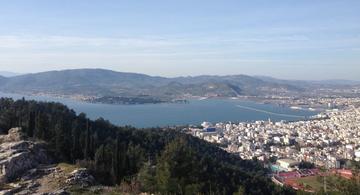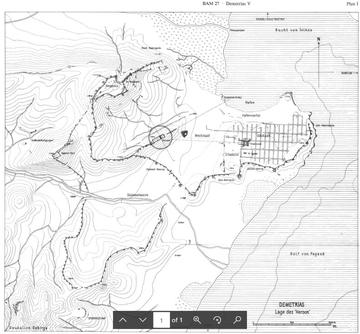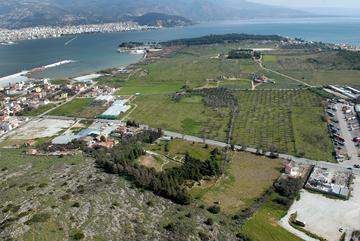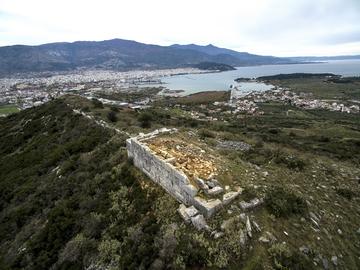
Fig. 1: View of Demetrias from the Goritsa hill [© M. Stamatopoulou]

Fig. 2: Plan of the city of Demetrias and detail of eastern sector [© P. Marzolff]
Demetrias, near modern Volos (fig. 1) was founded in 293/2 BCE by the Macedonian king Demetrios Poliorketes and became the major port of central Greece.
Characterized variously as a naustathmos (naval military base), a basileion (seat of royal power and the court) and a ‘fetter of Greece’, the city developed into a vibrant multi-ethnic port, with networks across the Mediterranean (fig. 2). Royal authority was represented in the palace set in the centre of the grid-planned city, overlooking the port, in the impressive fortifications (11-km long), and in the close association of royal and sacred space at the adjacent sanctuary of Artemis Iolkia and the nearby theatre
(figs 3-4)
Excavations have revealed sanctuaries, extensive cemeteries, numerous houses and workshop areas and abundant evidence for the city’s infrastructure, economy, artisanal production and trade. Even after the defeat of the Macedonians by Rome in the mid-second century BCE, Demetrias remained a thriving port until the late third century CE.

Fig 3: View of the main part of the Demetrias, with the theatre in the foreground, the remains of the Roman aqueduct, the palace hill overlooking the port. [© Hellenic Ministry of Culture and Sports, EFA Magnesias, photo: Thanos Efthymiopoulos]

Fig. 4: View towards the city and the Pelion peninsula from the acropolis of Demetrias. [© Hellenic Ministry of Culture and Sports, EFA Magnesias, photo: Thanos Efthymiopoulos]